The post What Is An ‘Urban Naxal’? appeared first on FWD Life | The Premium Lifestyle Magazine |.
]]>Text Credits: Shibul Pavithran
This article is an attempt to argue with the narrative that rebellion is not only possible, but sometimes its the absolute necessity to combat autocracy. An appropriate definition of terrorism could be based upon accepted international laws and principles regarding what behaviors are permitted in conventional wars between nations. The normal version would be relating to a state of war between two countries, that can be extended without difficulty to a conflict between a non-governmental organization and a state. This extended version would thus differentiate between guerrilla warfare and terrorism. The aims of terrorism and guerrilla warfare may well be identical; but their modes of operation may be quite different from each other. The guerrilla fighters usually target military, state and tyranny, while the terrorist deliberately targets civilians. By this definition, one can fairly say that guerrilla warfare is not an act of using power to hurt civilians but rather it is; using power to fight power. It is an act of revolt which goes against the unfair rule of the land, and in the due process takes care of the marginalized and ignored bunch of people.
Some one has rightly said that: “One man’s terrorist is another man’s freedom fighter” – Unknown

Source: theleaflet.in
Urban Naxal
Urban Naxal, the term has been coined and intentionally put forth in the public discourse to threaten and challenge the mere voice of dissent. The phrase loosely means people of Naxalite bent of mind who reside in urban areas and work as activists, supporters and protectors of the ideology while the active Naxals battle it out in the jungles and vast swathes of Maoist-dominated areas. And it is the perfect time in history to hit a refresh button and re-understand the original term: Naxals .

Source: The Week
Naxal entered Indian glossary in the decade of 1960 and has acquired a certain meaning over the years. The term Naxal comes from a village called Naxalbari in Siliguri district of West Bengal. Naxalism is understood at two levels – as a socio-economic issue and a law and order problem. The people who were involved in the launching Naxal operations/movement were frustrated with growing inequality among the various classes of society and government’s apathy to address the routine grievances of the poor. They launched armed rebellion against the system and the government dealt with it as a law and order problem.
The recent outrage

There has been a recent outburst all around India since the unprecedented arrest of five people by Maharashtra police, they were literally picked up from their houses, all of sudden, without any notice in connection with the Bhima Koregaon violence and have been accused to plan a conspiracy to kill PM Narendra Modi. Those arrested are well known social activists and professors. The police have have said they are Urban Naxals and have naxalite and maoist connections. A brief profile of the five activists arrested who were arrested are:
1)Vernon Gonsalves: He is a writer, social activist, poet and trade unionist, who was arrested in 2007 under similar charges. The security agencies had filed 20 cases against him, of which he was acquitted in 17. He was formerly a professor of Business Organisation at a prominent Mumbai college.
2)Arun Ferreira: Ferreira is a Mumbai-based human rights activist and lawyer. He is an alumnus of the St Xavier’s college. In 2007, Ferreira was detained for of being an alleged Naxal operative; however, he was later acquitted. He was charged in 11 cases and had been acquitted from all of them in 2011. Ferreira was part of the ‘Indian Association of People’s Lawyers and and the Committee for Protection of Democratic Rights.
3)Gautam Navlakha: He is a journalist, civil rights activists and is an editorial consultant of the Economic and Political Weekly. He has been a convener of the International People’s Tribunal on Human Rights and Justice in Kashmir and the secretary of People’s Union for Democratic Rights (PUDR).
4) Sudha Bharadwaj: Bharadwaj is an independent civil rights lawyer and activist who has been working in Chhattisgarh for 29 years now. The 54-year-old is the general secretary of the Chhattisgarh People’s Union for Civil Liberties (PUCL), and the founder of Janhit, a lawyers collective. Bharadwaj was born in the USA and gave up her citizenship and returned to India at a very young age. She graduated from IIT-Kanpur with an integrated degree in Mathematics. After witnessing the poor condition of labour and working class in several states when she had been a student, Bharadwaj moved to Chhattisgarh to work toward providing better opportunities and working and living conditions to the people of Chhattisgarh who work in mines and plants.
5) Varavara Rao: Revolutionary writer, poet, sharp critic of the current government and a naxalite sympathizer. He has been writing revolutionary poetry since 1957 and founded Srujana (creation), which is a forum for modern Telugu literature. Rao is currently 77 years old and was one of the founders of Viplava Rachayitala Sangahm (Revolutionary Writers’ Association), popularly known by its acronym Virasam, that supports and propagates Naxalite ideology and practice. He was associated with many a progressive and revolutionary journal in Telugu.
Intellectuals such as Arundhati Roy, Aruna Roy, Prashant Bhushan and Ramachandra Guha have condemned the recent arrest of these five activists and highly spoke against government’s stance about their arrest. Arundhati said,“This is an attempt to divert attention from the losing popularity that the BJP is facing right now and to fracture Opposition unity. This means we are living in a dangerous time and there will be a ruthless and continuous attempt to divert attention from the loss of popularity. Divide and rule is an old method but now it is divert and rule.” And ever since their arrest the social media is raging with hashtags such as #urbannaxal and #metoourbannaxal.
The post What Is An ‘Urban Naxal’? appeared first on FWD Life | The Premium Lifestyle Magazine |.
]]>The post Arundhati Roy and Meena Kandaswamy running for the 2018 Women’s prize for fiction appeared first on FWD Life | The Premium Lifestyle Magazine |.
]]>Text Credit: Shibul Pavithran
The Women’s Prize for Fiction, previously known as the Baileys Prize, announced its longlist for 2018 on March 8. (International Women’s day)
Arundhati Roy’s The Ministry of Utmost Happiness and Meena Kandasamy’s When I Hit You: Or, A Portrait of the Writer as a Young Wife are among the 16 novels longlisted this year.This year’s longlist covers both new and well-established writers, like Booker Prize-winning Arundhati, and a range of genres. There are six debut novels on the list and four nationalities are represented including India, the UK, US, and Australia.
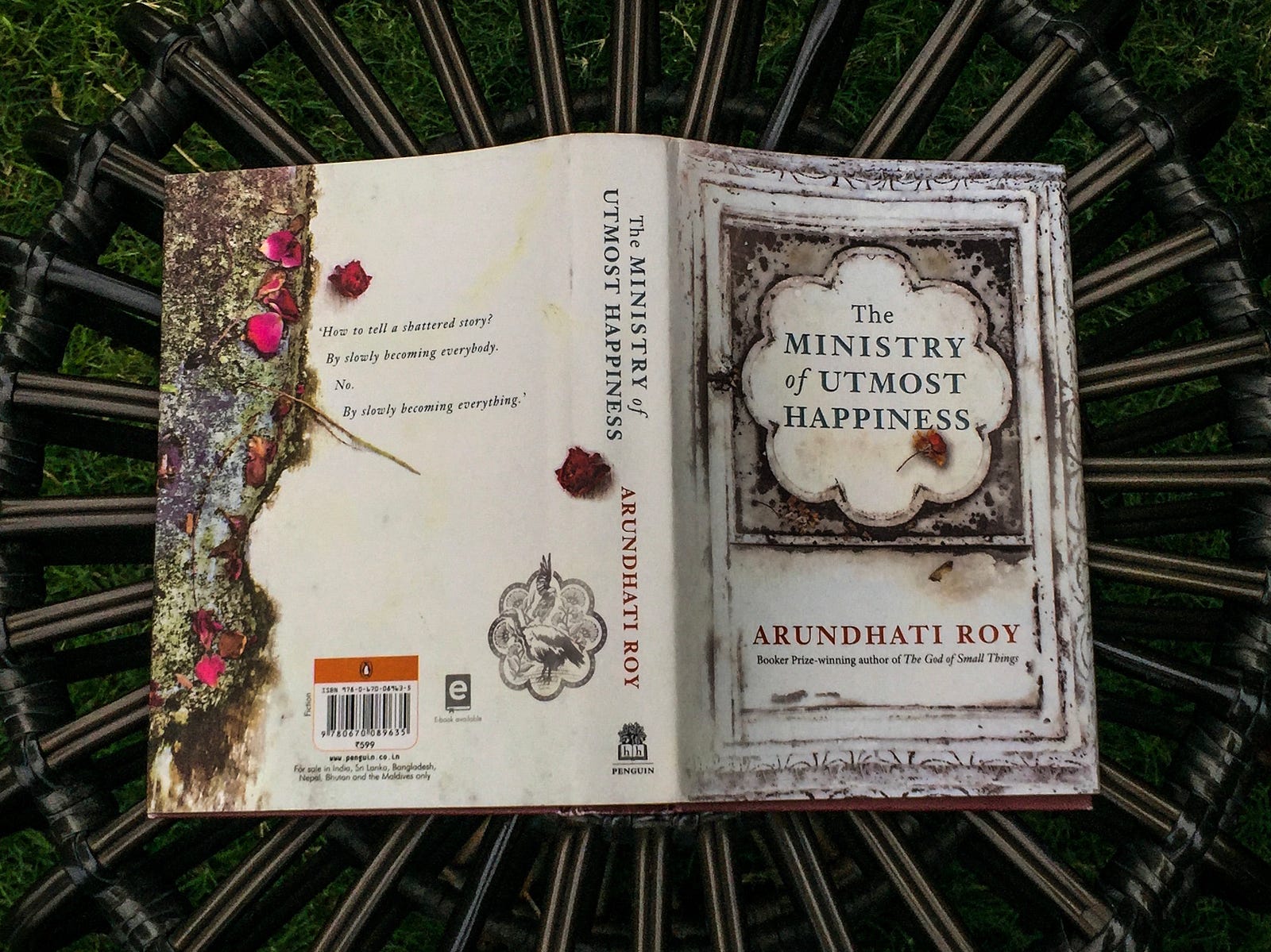
Arundhati, 56, who won the Booker Prize for her debut novel The God of Small Things in 1997, had been longlisted for the 2017 Booker for The Ministry of Utmost Happiness, but missed out being shortlisted. The sprawling story that it is, has two main strands. One follows Anjum, a hijra, or transwoman, struggling to make a life for herself in Delhi. The other follows Tilo, a thorny and irresistible architect turned activist (who seems to be modeled on Arundhati herself), and the three men who fall in love with her…..

Image Source: Meena Kandaswamy
When I Hit You: Or, A Portrait of the Writer as a Young Wife; by Meena Kandaswamy is a dazzling and provocative novel of an abusive marriage. It’s a slightly difficult book to read despite the stark beauty of her language and despite the fact that this is a fictionalized telling of her own marriage. But it’s definitely a powerful book with substance and brutal honesty.
The Women’s prize was set up in 1996, following a year when not a single female author was shortlisted for the Booker prize. Sarah Sands, 2018 chair of judges and Editor of BBC Radio 4’s Today Programme, said the longlist this year demonstrated that the prize was not “a special-pleading award” for writers who wouldn’t make it in other circumstances.
Any woman writing in English – whatever her nationality, country of residence, age or subject matter – is eligible. Sarah leads this year’s team of judges that include British Indian journalist and broadcaster Anita Anand, comedian Katie Brand, Women’s Equality Party co-founder Catherine Mayer and actor Imogen Stubbs.
“What is striking about the list, apart from the wealth of talent, is that women writers refuse to be pigeon-holed. We have searing social realism, adventure, comedy, poetic truths, ingenious plots and unforgettable characters,” said Sarah Sands.
On #InternationalWomensDay we’re thrilled to reveal the 2018 #WomensPrize longlist!
Congratulations to all of our longlisted authors: https://t.co/tnDDGyFl66 pic.twitter.com/uUo0bnunvF
— Women’s Prize (@WomensPrize) March 8, 2018
The prize will be awarded on June 6 at an awards ceremony in central London.
The Longlist:
H(A)PPY, Nicola Barker
The Idiot, Elif Batuman
Three Things About Elsie, Joanna Cannon
Miss Burma, Charmaine Craig
Manhattan Beach, Jennifer Egan
The Mermaid And Mrs Hancock, Imogen Hermes Gowar
Sight, Jessie Greengrass
Eleanor Oliphant Is Completely Fine, Gail Honeyman
When I Hit You: Or, A Portrait Of The Writer As A Young Wife, Meena Kandasamy
Elmet, Fiona Mozley
The Ministry Of Utmost Happiness, Arundhati Roy
See What I Have Done, Sarah Schmidt
A Boy In Winter, Rachel Seiffert
Home Fire, Kamila Shamsie
The Trick To Time, Kit de Waal
Sing, Unburied, Sing, Jesmyn Ward
Click Here, to read more about Arundhati Roy: http://www.fwdlife.in/pen-is-mightier-than-the-sword
http://www.fwdlife.in/tell-shattered-story-ministry-utmost-happiness
http://www.fwdlife.in/five-mus-reads-from-indian-authors
The post Arundhati Roy and Meena Kandaswamy running for the 2018 Women’s prize for fiction appeared first on FWD Life | The Premium Lifestyle Magazine |.
]]>The post Five Must-Reads From Indian Authors appeared first on FWD Life | The Premium Lifestyle Magazine |.
]]>Text Credit: Roshan D
Books are considered to be a person’s best friend. It does everything that you’d expect your best friend to do. It tells you stories about the people that you might have once heard about or stories about a complete stranger. While it lets you experience different emotions and lets you walk alongside with the characters of the story, it sometimes lets you want to be the character. So, taking this into account, let’s explore five books written by Indian authors that are a must read.
A God of Small Things by Arundhati Roy
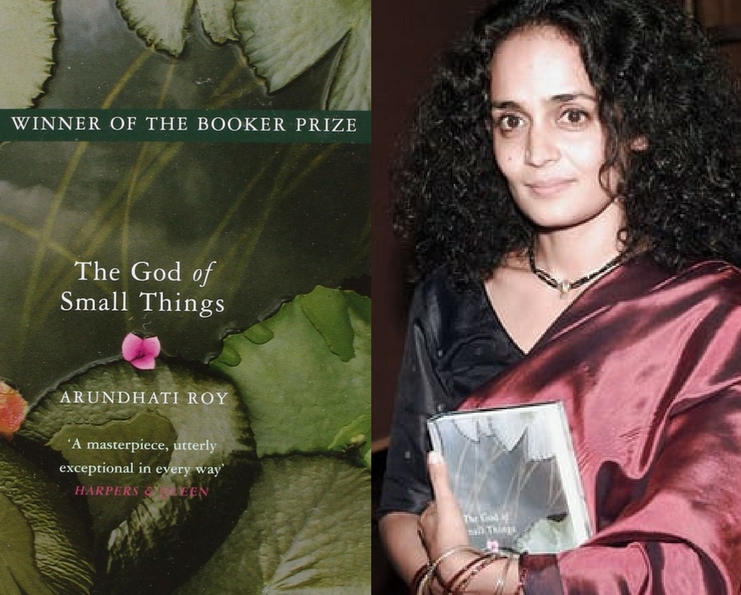
Set in the backdrops of a small village in Kerala, it is a story about the childhood experience of fraternal twins. With a few unfortunate turn of events, their lives completely changed and took a detour.
This was Roy’s debut novel and was published in the year 1996, making it one of the all-time favorites of the readers. In 1997, The God of Small Things won the Man Booker Prize for Fiction and was listed as one of the New York Times Notable Books of the Year.
The Palace of Illusions: A Novel by Chitra Banerjee Divakaruni

Have you wondered what if Mahabharata, the Sanskrit epic of ancient India was retold from a woman’s perspective? Well, The Palace of Illusions: A Novel is an execution of Hindu epic Mahabharata from Draupadi’s viewpoint, namely, that of a woman living in a patriarchal world.
A book that captured the true emotions of Draupadi, it was critically acclaimed by many with positive reviews. The novel written by the award-winning Indian-American author and poet, this is considered to be one of the finest works by the author.
Looking for a twist in the plot and a different perspective, you know where to lay your hands.
Nacropolis by Jeet Thayil
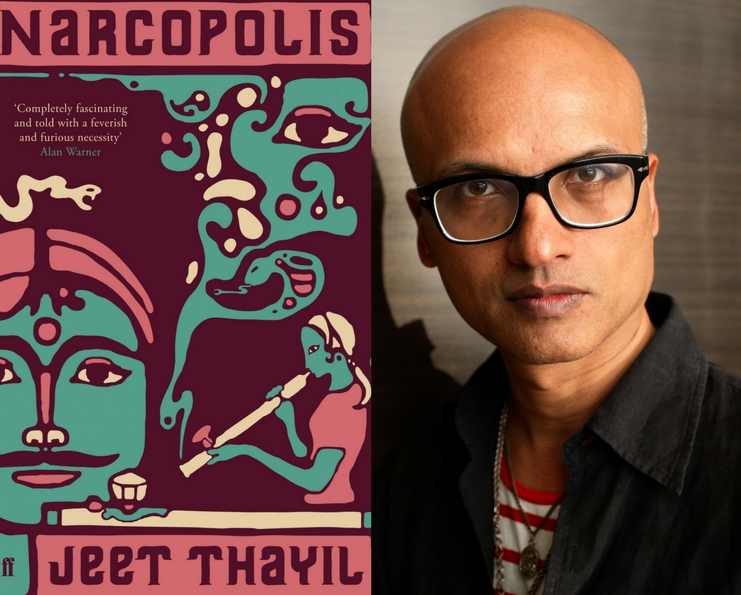
Set in the 1970s Old Bombay, Narcopolis tells the story about the city of intoxication, intoxicated in the influence of opium. The novel draws on his own experiences as a drug addict, but the story expands with characters that are closely associated with the drug scene of the city.
As a novel that took the author five years to write, this book was nominated for Man Booker Prize in 2012. As a book that talks about the darkest side of the drug scene in a city, some might find depressing and some exciting. But it’s worth a read.
Milk and Honey by Rupi Kaur
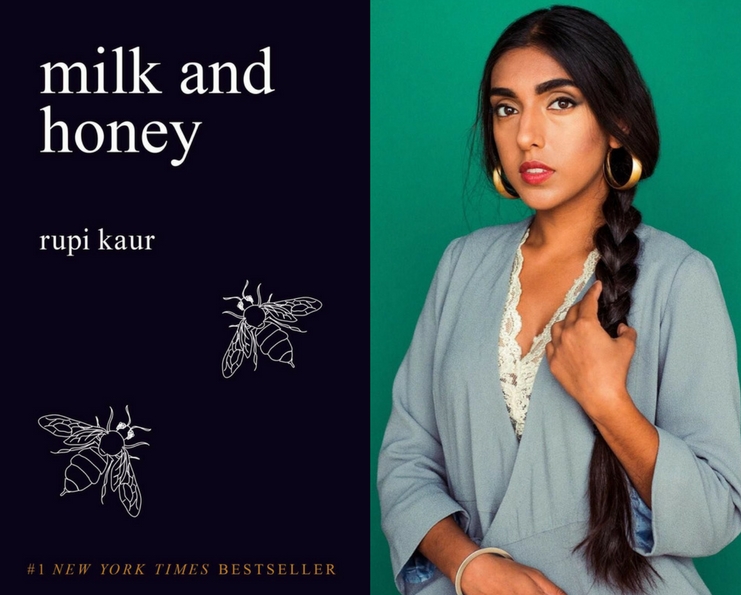
Written by Rupi Kaur, an Indo-Canadian poet and illustrator, this book is a collection of poetry, prose and hand-drawn illustrations dealing with themes of violence, abuse, love, loss, and feminism.
Critically appreciated by all around the world, the book topped the New York Times bestsellers list and remained on it for 52 consecutive weeks. While emotions are a thing for all the readers, Milk and Honey will make you experience all kinds of emotions, empowering you to do things that you haven’t do before.
Midnight’s Children by Salman Rushdie
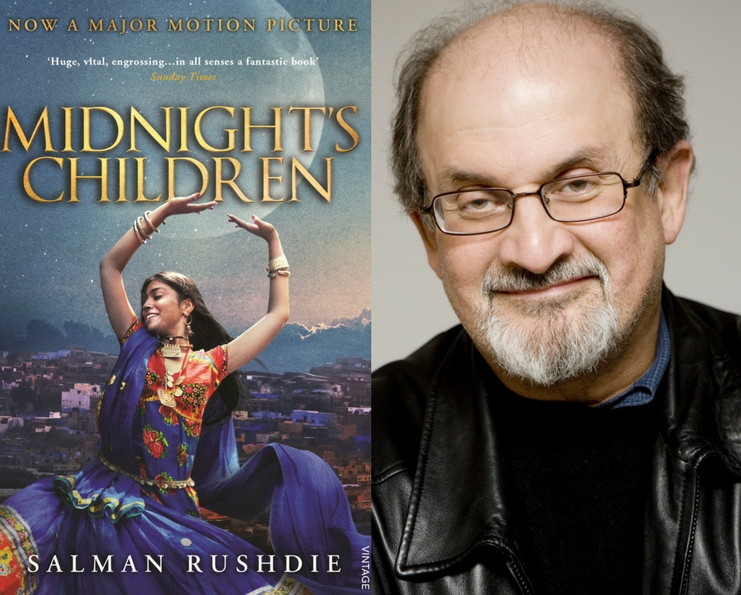
A recipient of Man Booker Prize 1981, the story is set in the context of actual historical events. The story told by Saleem Sinai, the chief protagonist was born in the midnight of the independence of India and the partition of British India.
Written by Sir Ahmed Salman Rushdie, a British Indian novelist, and essayist, this novel is considered as an example of postcolonial, postmodern and magical realist literature. In addition to the positive acclimations received, the book was also awarded Booker of Bookers prize and was listed as the best-loved novels on the BBC’s The Big Read poll of the UK.
The post Five Must-Reads From Indian Authors appeared first on FWD Life | The Premium Lifestyle Magazine |.
]]>The post Pen Is Mightier Than The Sword! appeared first on FWD Life | The Premium Lifestyle Magazine |.
]]>Text Credit: Shibul Pavithran
The central theme will be ‘dissent’. ‘No Democracy without Dissent’ will be theme of the third edition of the Kerala Literature Festival. The situations of extreme intolerance and diverse kinds of violence that India- along with many other countries- is now passing through foreground the necessity of democratic opposition and the assertion of basic civil and human rights.
“Don’t throw stones at us, we will build houses with it.” The remainder of the statement by actor Prakash Raj got submerged with huge uproar by the crowd. “Don’t shoo away the fighters, they will reach their goal a little faster,” he concluded setting the spirit and mood for the Kerala Literature Festival (KLF) in Kozhikode, on Thursday.
The festival is conceived as an open platform for dialogue, dissent and discussion, the spaces for which seem to have been shrinking over the years. It is also a space for the Malayalam writers of three generations to meet and debate issues and evaluate the recent transformations in idiom and sensibility. It enables writers and thinkers in Kerala to interact with their counterparts in other parts of India and of the world.

The third edition of the four-day Kerala Literature Festival (KLF) had a vibrant begining on Thursday with the participation of eminent writers and intellectuals. They included Arundhati Roy, Romila Thapar, M.T. Vasudevan Nair, T. Padmanabhan, actor Prakash Raj, K.R. Meera, poet Satchidanandan, Balachandran Chullikkad and K.P. Ramanunni. The programme was officially opened on a sandy beach with Sopanam exponent Njeralath Harigovindan singing a song on the strength of womanhood.

Writer K.Satchidanandan is the director for the festival. More than 500 speakers will be attending various sessions over four days in six venues. Veteran journalists T.J.S. George, Sashi Kumar, B.R.P. Bhaskar, and Rajdeep Sardesai, director Mahesh Bhatt, and actors Rishi Kapoor, Revathy, and Padmapriya too would take part in various sessions.
A film festival curated by Bina Paul is also something to look forward to, and Ofir Fest, a food festival featuring unexplored delicacies of Malabar, are the other specialties of the festival this year.
The post Pen Is Mightier Than The Sword! appeared first on FWD Life | The Premium Lifestyle Magazine |.
]]>The post How To Tell A Shattered Story Through The Ministry Of Utmost Happiness appeared first on FWD Life | The Premium Lifestyle Magazine |.
]]>It’s all over the Internet. Arundhati Roy’s latest book, The Ministry of Utmost Happiness, and there are reviews everywhere. Some say it’s well worth the two-decade wait. Some say it isn’t as good as ‘The God Of Small Things’. Arundhati Roy is the author of The God of Small Things, which won the Booker Prize in 1997. Two volumes of her non-fiction writing, The Algebra of Infinite Justice and An Ordinary Person’s Guide to Empire, were published in 2001 and 2005 respectively. The Shape of the Beast, a collection of her interviews, was published in 2008. Arundhati Roy lives in New Delhi. This is her latest book!
Amidst the confusion, we decided to give you some clarity on this. Here’s the book’s synopsis:
“How to tell a shattered story? By slowly becoming everybody. No. By slowly becoming everything.’ The Ministry of Utmost Happiness takes us on a journey of many years—the story spooling outwards from the cramped neighbourhoods of Old Delhi into the burgeoning new metropolis and beyond, to the Valley of Kashmir and the forests of Central India, where war is peace and peace is war, and where, from time to time, ‘normalcy’ is declared. Anjum, who used to be Aftab, unrolls a threadbare carpet in a city graveyard that she calls home. A baby appears quite suddenly on a pavement, a little after midnight, in a crib of litter. The enigmatic S. Tilottama is as much of a presence as she is an absence in the lives of the three men who loved her. The Ministry of Utmost Happiness is at once an aching love story and a decisive remonstration. It is told in a whisper, in a shout, through tears and sometimes with a laugh. Its heroes are people who have been broken by the world they live in and then rescued, mended by love—and by hope. For this reason, they are as steely as they are fragile, and they never surrender. This ravishing, magnificent book reinvents what a novel can do and can be. And it demonstrates on every page the miracle of Arundhati Roy’s storytelling gifts.”
Here’s what all the major publications are saying about her books.
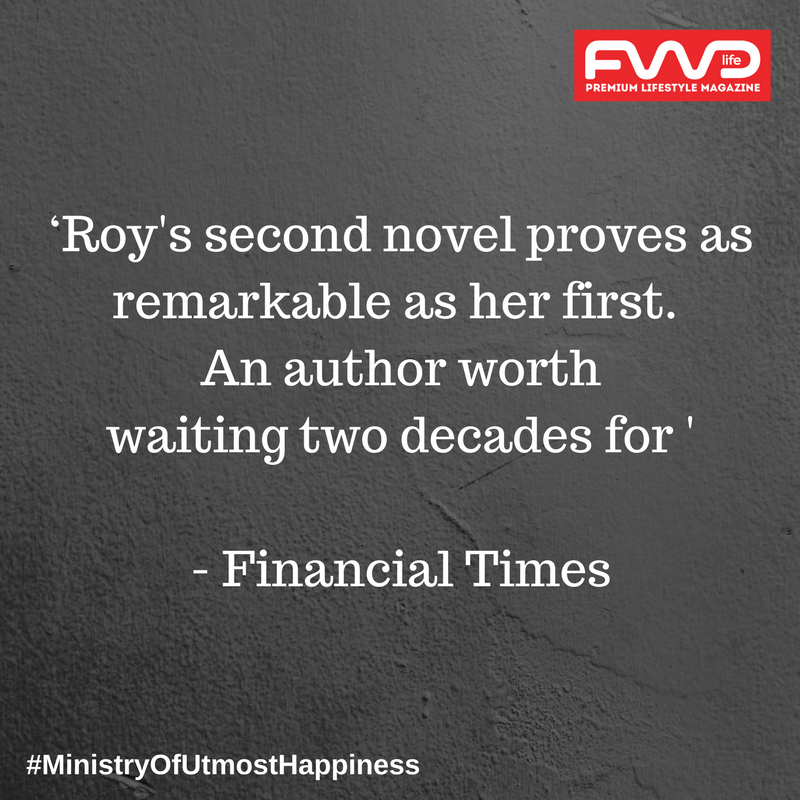
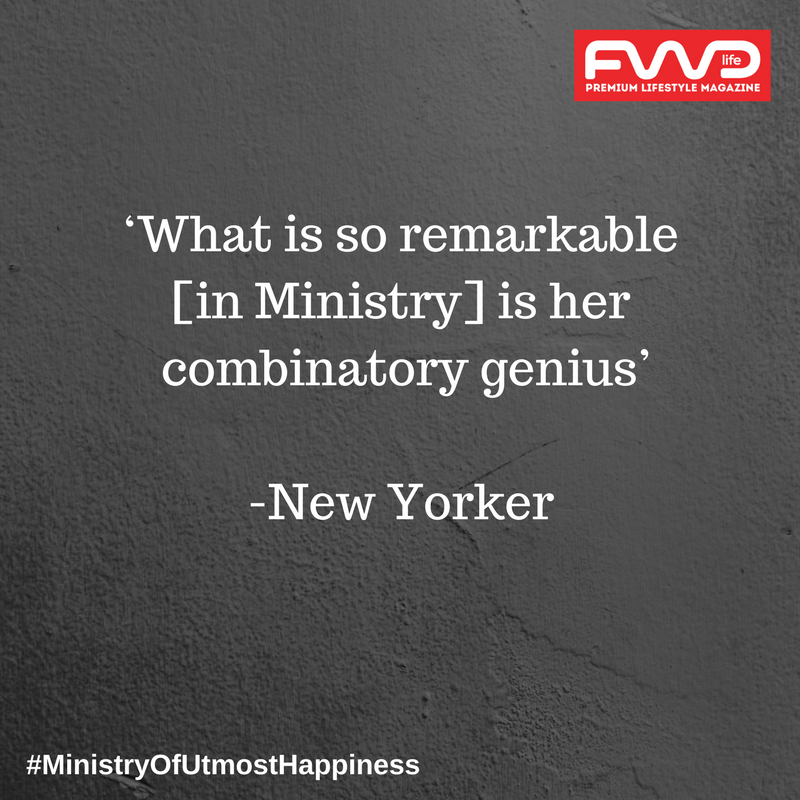

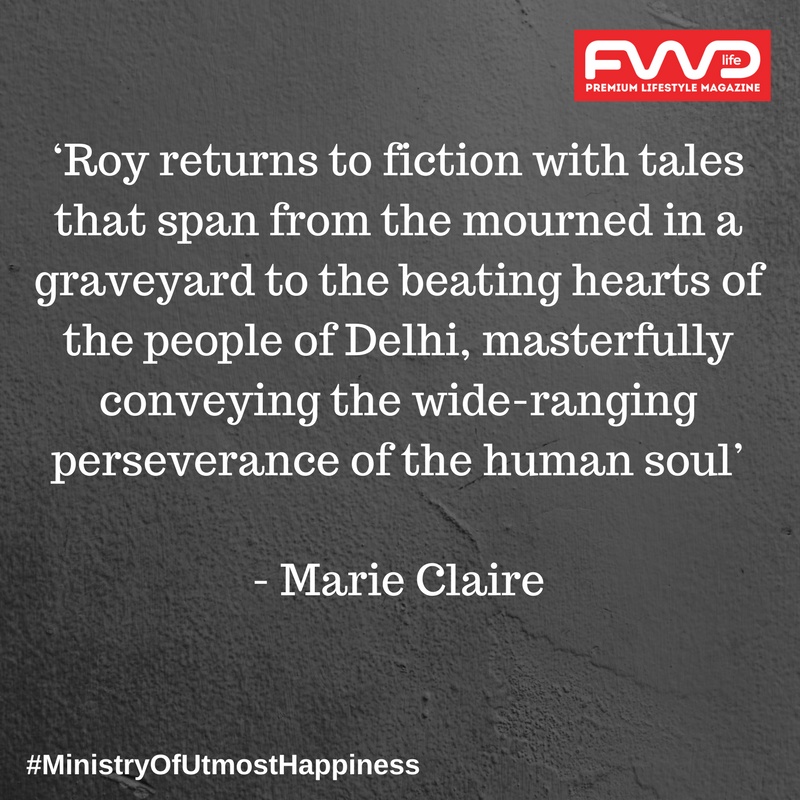
Feature Image Source: Blogspot.com
The post How To Tell A Shattered Story Through The Ministry Of Utmost Happiness appeared first on FWD Life | The Premium Lifestyle Magazine |.
]]>